A more perfect setting for an evening focused on designing for the senses could not be found.
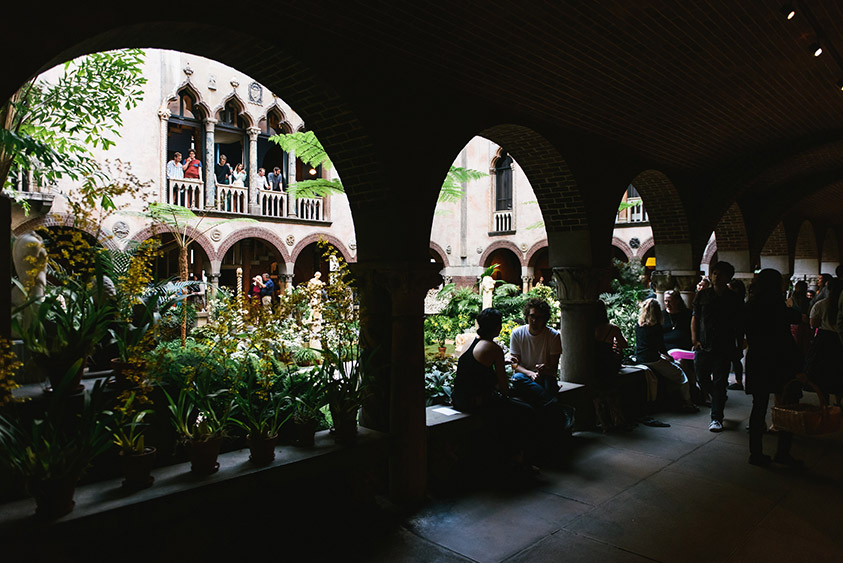
Credit: Ben Gebo
We paired up with the Isabella Stewart Gardner museum for their June Third Thursday event, themed Design for the Senses. The building fuses past and present, indoors and out, grand and discreet in a way all its own. The woman behind this jewel meticulously arranged her pieces from around the world “in a way to evoke intimate responses.”1 Created for “the education and enjoyment of the public,” the museum lives up to its namesake’s wishes with glorious evenings like this.
A string duo was perched in the lush courtyard at the center of the museum, their songs wafting through the corridor and into the upper galleries that overlooked. Guests perused the visually rich collection and meandered through the floral-scented garden while sipping cold beverages. Designed for the senses, indeed.
Touch, sight, taste, smell, sound. On a simple level these senses help us enjoy such an evening, but their hidden complexities offer curious designers new territory to explore. Four such designers shared their work with us: Meejin Yoon of Höweler + Yoon Architecture and MIT, Eric Gunther of Sosolimited, Sara Hendren of Abler blog and Olin College, and MJ Caselden of Casleden Studios (not pictured).
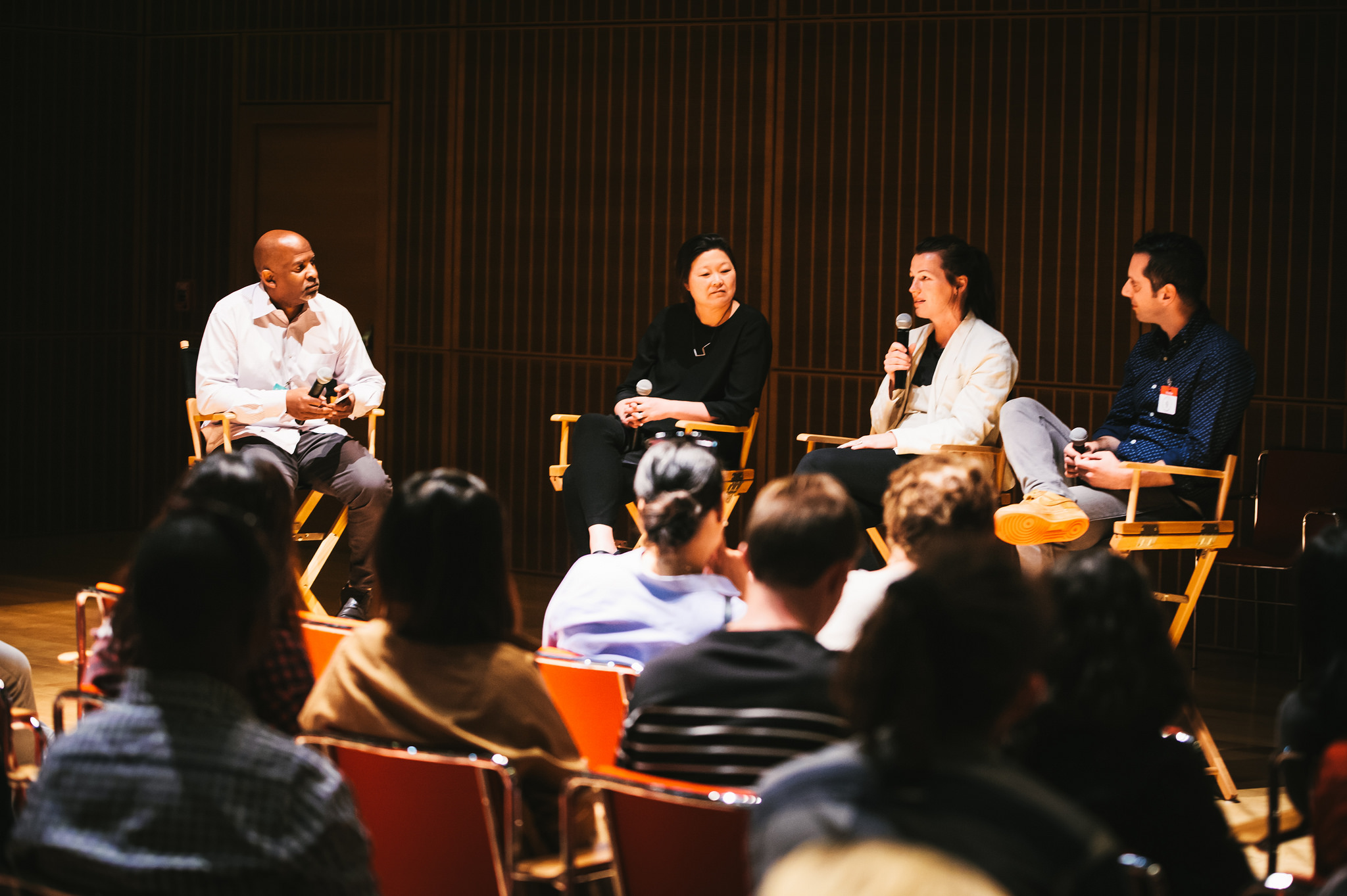
Pictured: David Oliver, Meejin Yoon, Sara Hendren, Eric Gunther

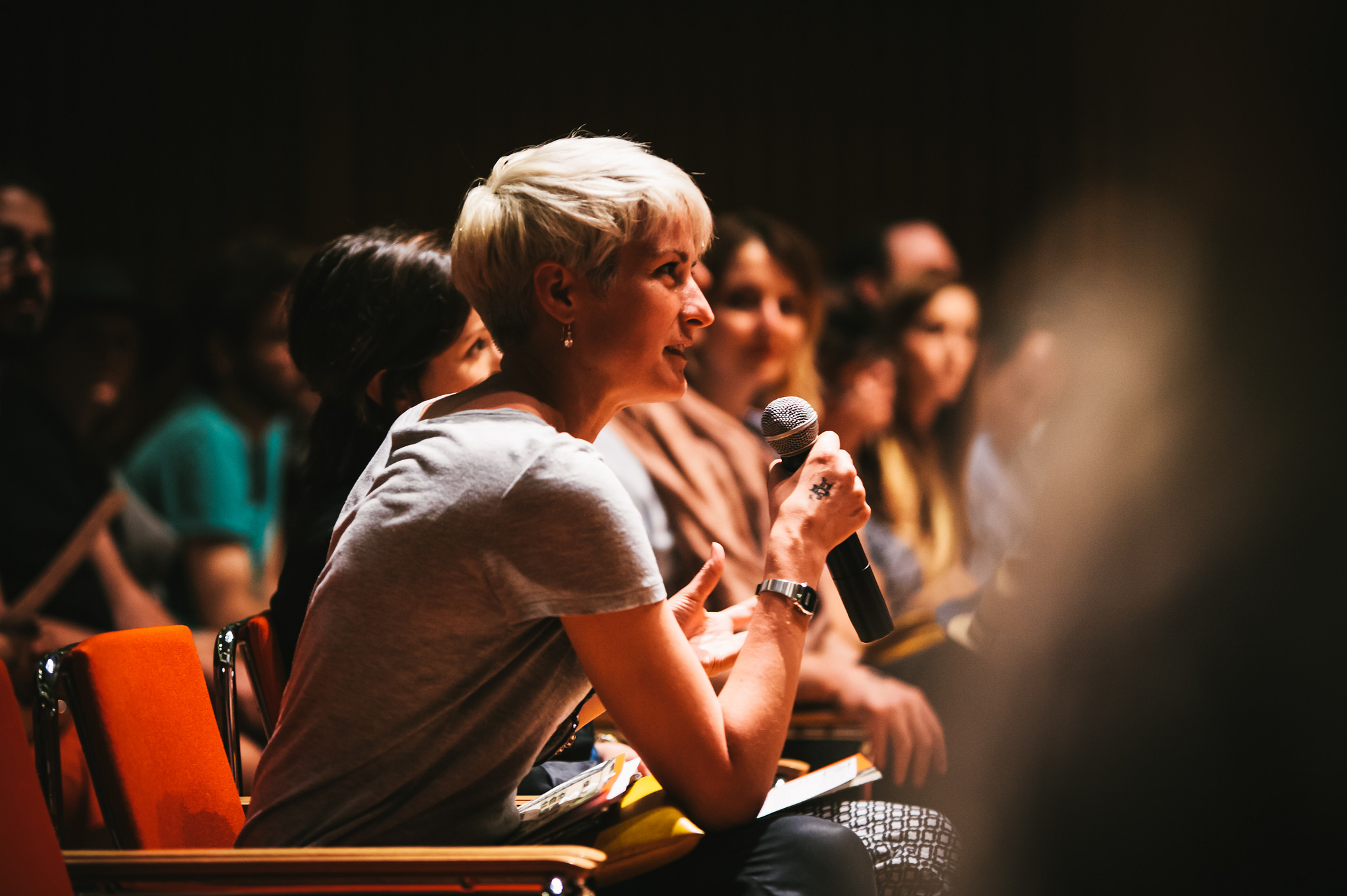
Credit: Ben Gebo
Their work involves both understanding our senses and observing our perceptions of them: two very different things.
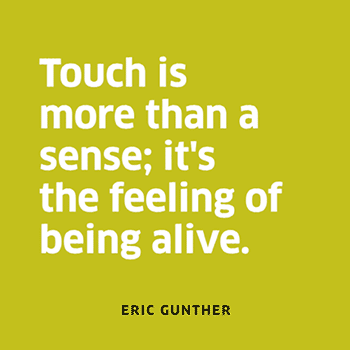
Image credit: Eric Gunther & Jackie Littman
The senses are not distinct from one another. They tangle together to create an experience that our minds read differently based on the situation. Gunther uses this overlap to transport our sense of touch to new places. In one piece, participants sit on a chair with vibrations in the seat, while wearing headphones that suggest scenarios such as “falling backwards into a tub of jello” or “slugs making love on a bike seat” in sync with the changing vibrations. This combination tells the user a story in a new way.
This newness has value: Yoon pointed out that in unfamiliar surroundings, our senses are heightened, something that has both enhanced and hindered her public art installations in the past. This phenomenon affects how users will acquaint themselves with places, objects, or any foreign design they encounter. Designers can use this knowledge to create a better first interaction, and therefore a more successful product in its entirety.

Image credit: Eric Gunther & Jackie Littman
A sensory overload is just one of the many extreme scenarios we can consider to help our designs work better for all users. As a design professor for engineers-in-training, Hendren uses this theory to teach her students. The class creates assistive technology for individuals with atypical bodies, thereby exploring the spectrum of the human experience. She points to Under Armour’s one-handed zipper as an example of what this practice can achieve. Now a favorite of athletes of all kinds, the zipper was originally developed by an engineer for his uncle who had muscular dystrophy.
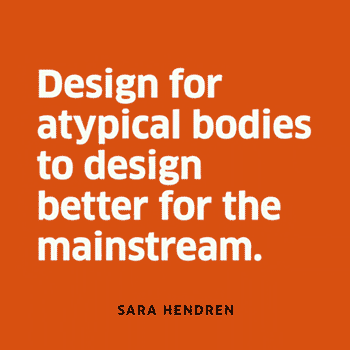
Image credit: Eric Gunther & Jackie Littman
Hendren does caution, though, that designers should be wary of attempting to understand your client’s world by emulating their day-to-day. Differing life experiences ensure that two perceptions of the same experience will be not match. Instead, familiarize yourself with the objects and places in your client’s world just enough so that you can ask them more informed questions.
Caselden presented a littleBits workshop that allowed guests to explore some of these themes hands-on with the easy-to-use electronic building blocks. His studio creates multi-sensory experiences that “explore new ways for people to interface with machines.” A piece he brought to exemplify this was a string instrument created with littleBits that produces sound by responding to movement, light and shadow.
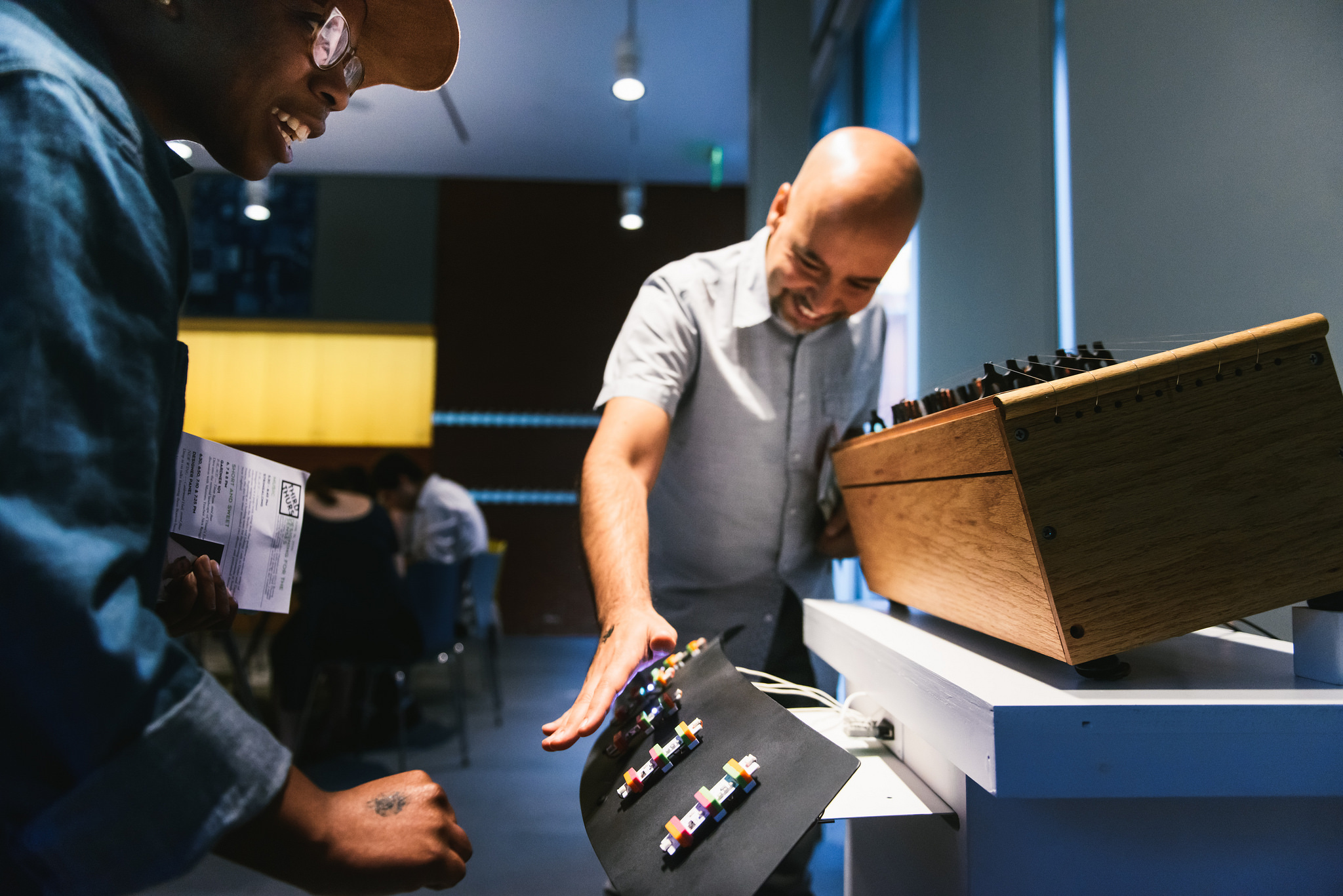
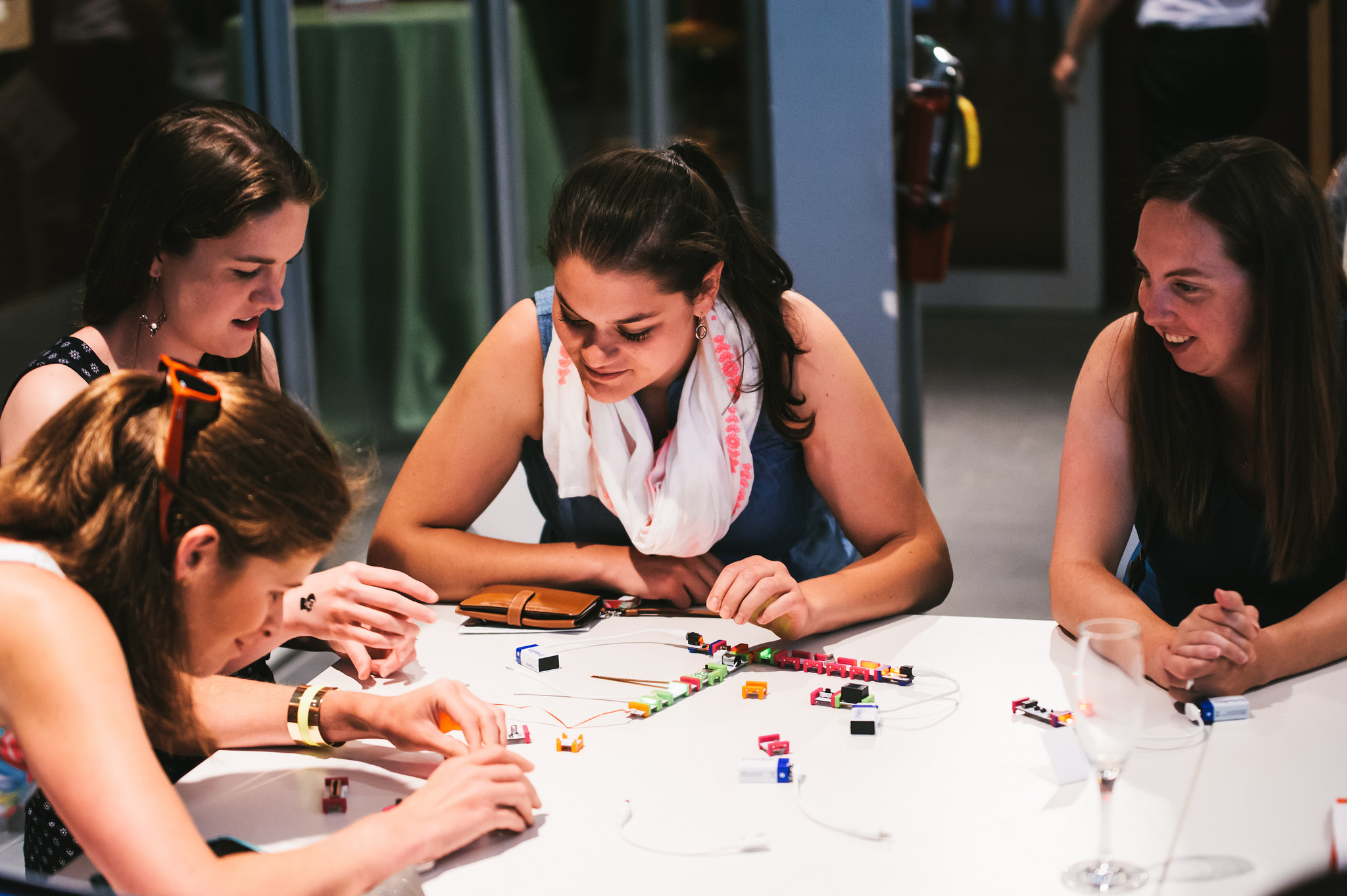
Credit: Ben Gebo
Isabella Stewart Gardner and the designers present helped tweak our flat understanding of how our senses work. Once again, we were reminded that our own awareness is limited and we must continually explore beyond its confines. Moderator David Oliver, of Cusp Product Development, summed it up: “It’s interesting to see something I thought I knew and have it be completely different.” By engaging the senses in new and unexpected ways we have the opportunity to profoundly change the way all humans move through the world.
About the sensory graphics by Jackie Littman and Eric Gunther
All of the speakers expressed a spirit of working across the senses. We knew that the final designs would be visual and wanted to find a way to incorporate other sensory inputs.
We converged on the idea of using vibrations to modulate and break apart the text. At their core, all of our senses are reading different frequencies of vibration. The human voice provides an expressive source of vibrations: rhythmic yet unpredictable.
We recorded our voices speaking each quote aloud, and mapped the audio to different motion effect parameters applied to the text layouts. We kept our color palette minimal to avoid overwhelming the visual sense. We chose a treatment to reflect the character of each statement, using texture and motion to convey a feeling.
Jackie Littman is a graphic designer with a passion for interaction and illustration. Eric Gunther is a computational artist. Both work at Sosolimited, a Boston/San Diego based studio that crafts seductive and meaningful experiences through an inventive union of design, technology, and data.
We thank Ben Gebo for his amazing photos of this event. View all photos from the evening on our Flickr, and see more of Ben’s work here.
Thank you to the Isabella Stewart Gardner Museum for co-hosting this event! We had a beautiful night in your space.
1Isabella Stewart Gardner Museum